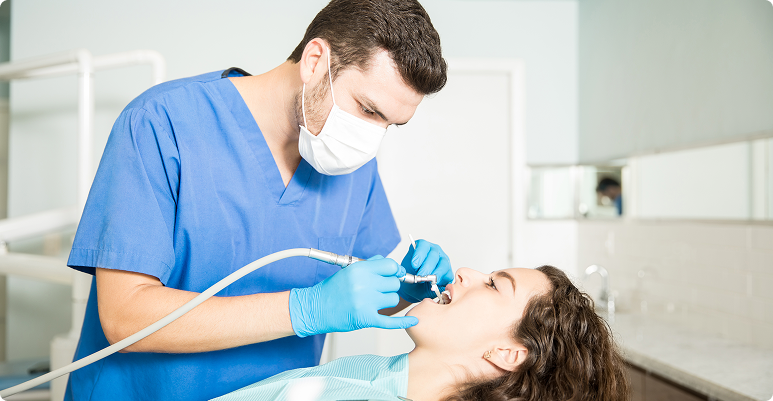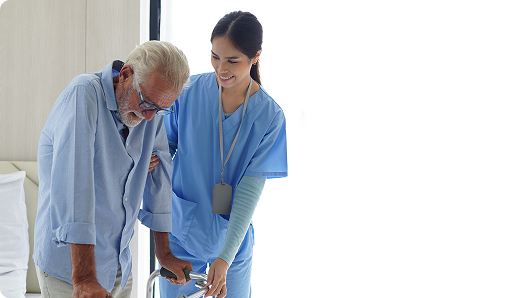Oral suctioning

Oral suctioning
Oral suctioning is a crucial procedure for individuals who are unable to independently clear mucus and secretions from their mouth. If you need assistance with this task, consider booking a nurse from Homage to safely and professionally perform oral suctioning in the comfort of your home. Our trained nurses are equipped to provide this essential service, ensuring comfort and proper care for those in need.
What is Oral Suctioning?
Oral suctioning is a medical procedure used to remove saliva, mucus, blood, vomit, or other secretions from a person's mouth and throat. This procedure is important in maintaining airway patency (openness) and preventing aspiration, which is the inhalation of foreign material into the lungs. Oral suctioning is commonly performed in various healthcare settings, including hospitals, emergency care, and long-term care facilities, as well as in home care settings for patients with certain medical conditions.
Indications for Oral Suctioning
-
Inability to Clear Secretions: Patients who cannot cough or swallow effectively.
-
Risk of Aspiration: In cases of diminished gag reflex or consciousness.
-
Postoperative Care: For patients recovering from surgeries involving the mouth or throat.
-
Neurological Disorders: Conditions like stroke or muscular dystrophy affecting swallowing.
-
Respiratory Illnesses: Such as pneumonia, where secretions are excessive.
Equipment Needed
-
Suction machine (portable or wall-mounted)
-
Yankauer suction tip (a rigid, curved suction tool)
-
Suction catheters (if deeper suctioning is needed)
-
Connecting tubing
-
Personal Protective Equipment (PPE) Gloves, mask, eye protection
-
Oxygen delivery system (if patient requires supplemental oxygen)
Who Needs Oral Suctioning?
Oral suctioning is often necessary for individuals who are unable to effectively clear their mouth and throat of secretions such as saliva, mucus, or vomit. This procedure is particularly important for:
-
Patients with Neurological Impairments
-
Critically Ill or Sedated Patients
-
Postoperative Patients
-
Individuals with Respiratory Conditions
-
Patients with a Diminished Gag Reflex
-
Elderly Patients
-
Infants and Children with Developmental Delays
-
Palliative Care Patients
In each of these cases, oral suctioning helps to maintain a clear airway, prevent aspiration (the inhalation of foreign material into the lungs), and improve overall comfort and hygiene.
How can our nurses help?
Nurses play a crucial role in performing oral suctioning, especially for patients who are unable to clear their own airways. Here’s how nurses can help with oral suctioning:
-
Assessment and Monitoring: Nurses begin by assessing the patient’s need for suctioning. They monitor vital signs, oxygen saturation, and the patient’s overall comfort and responsiveness.
-
Preparation and Equipment Setup: Nurses gather and set up the necessary equipment, such as the suction machine, Yankauer suction tip or appropriate suction catheters, and personal protective equipment (PPE).
-
Ensuring Patient Safety and Comfort: Before starting the procedure, nurses explain the process to the patient (if the patient is conscious) to alleviate anxiety. They also position the patient properly to ensure safety and ease of suctioning.
-
Performing the Suctioning Procedure: Nurses skillfully and gently insert the suction catheter or Yankauer tip into the patient’s mouth to remove secretions, ensuring the procedure is as comfortable as possible. They are trained to be efficient and quick to minimize discomfort and the risk of hypoxia (low oxygen levels).
In essence, nurses are essential in ensuring that oral suctioning is performed safely, effectively, and compassionately, adapting their approach to each patient’s unique needs and circumstances.

Why do feeding tube insertions at home?

Save your Time
Avoid long waits and reduce the risk of infections in the hospital

Comfort and privacy
Nursing procedures can be done in the comfort of your home with the same level of effectiveness as in the hospital

Faster response time
We are able to get a nurse to you in as quickly as 2 hours (urgent charges may apply)

Lower overall cost
No hefty ambulance and A&E fees